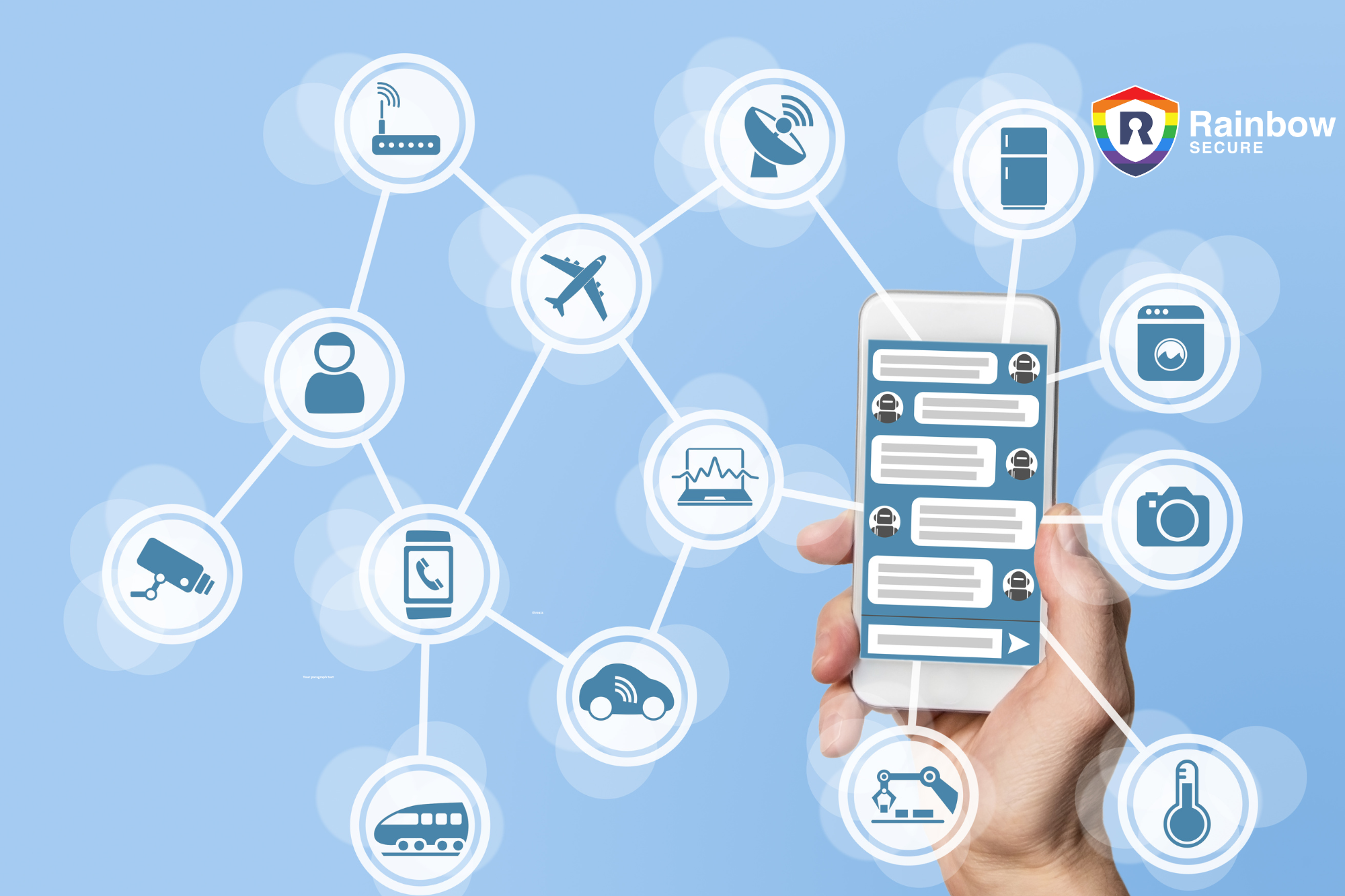The use of operational technology (OT) and Internet of Things (IoT) devices has surged, offering heightened efficiency and visibility into organizational operations. However, these networked devices pose significant security risks, broadening the attack surface of an organization.
Consumer IoT devices and long-lasting OT devices, unfortunately, often lack robust security measures, which poses a risk when connected to the network. As companies continue to integrate these devices into their networks, they must weigh the pros and cons of each device, balancing out the advantages against the risks they pose to data confidentiality, integrity, and availability.
Each device deployed on the corporate network broadens the organization’s digital attack surface, leaving it vulnerable to coding flaws, access management issues, and other vulnerabilities. Effective IoT security is paramount when mitigating the risks these devices pose to the organization.
As the IoT ecosystem continues to grow, so do the opportunities for malicious actors to exploit the flow of information to and from network-connected devices, increasing the vulnerability of once-manual processes. Recent large-scale distributed denial-of-service attacks in the US and elsewhere underscore the importance of IoT security against malicious cyber activity.
In this article, you will read about:
What is IoT Security?
Recent IoT Security Breaches
Understanding and exploring the Difficulties of IoT Security
Challenges and vulnerabilities in IoT security
Methods to Secure IoT Systems and Devices
How can Rainbow Secure help?
What is IoT Security?
Protecting Connected Devices and Networks IoT security, or internet of things security, is a critical technology segment that focuses on safeguarding connected devices and networks within IoT. With IoT, internet connectivity is added to a system of interrelated computing devices, machines (mechanical and digital), objects, animals, and people. Each “thing” has a unique identifier and can automatically transfer data over a network. However, this level of connectivity can leave devices vulnerable to serious security breaches if not properly protected.
The term “IoT” is extremely broad and continues to expand as technology evolves. From watches to thermostats to video game consoles, nearly every digital device has some form of internet or device-to-device interaction capability.
IoT security is an even more expansive field, encompassing a wide range of methodologies to combat the growing threat of cybercrime and cyberterrorism that stem from vulnerable IoT devices. These methodologies include application programming interface (API) security, public key infrastructure (PKI) authentication, and network security, among others.
Recent IoT Security Breaches
The following are examples of IoT security breaches that have occurred over the past few years:
- In July 2020, Trend Micro identified an IoT Mirai botnet downloader that was adaptable to new malware variants. This downloader was capable of delivering malicious payloads to exposed Big-IP boxes. The detected samples exploited vulnerabilities in standard IoT devices and software that were either recently disclosed or unpatched.
- In March 2021, a Swiss hacker group hacked into Verkada, a security camera startup, accessing 150,000 live camera feeds. The affected cameras were used to monitor activity in various locations, including schools, prisons, hospitals, and Tesla facilities.
- Hackers began exploiting 13 IoT vulnerabilities related to remote code execution in late 2022. They modified the Mirai malware and installed it on compromised devices, providing them with unauthorized control over affected systems.
- In March 2023, Akuvox discovered zero-day flaws in its smart intercom that allowed remote eavesdropping and surveillance.
- Also in March 2023, vulnerabilities related to buffer overflow were discovered in the Trusted Platform Module 2.0 protocol, putting billions of IoT devices at risk.
Understanding and exploring the Difficulties of IoT Security
IoT security is a cybersecurity approach that focuses on protecting physical IoT devices connected to a network against cyberattacks. The absence of robust security measures leaves connected IoT devices vulnerable to intrusion, data breaches, and compromise by attackers, ultimately leading to a system takedown or data theft.
The most significant challenge to IoT security is the constant expansion of the attack surface, which occurs as large volumes of diverse IoT devices connect to the network. This leads to a decline in the overall network security posture, which is directly proportional to the security level of the least secure device. The IoT umbrella doesn’t strictly include internet-based devices either. Appliances that use Bluetooth technology also count as IoT devices and, therefore, require IoT security.
Internet of Things (IoT) devices are highly susceptible to cyber-attacks due to their expansive internet-supported connectivity. While this accessibility is valuable, it also exposes them to remote hacking through phishing and other methods. IoT security must account for the numerous entry points available for hackers to exploit.
Challenges and vulnerabilities in IoT security include:
- Lack of industry foresight: Certain industries, such as automotive and healthcare, have increased their reliance on IoT devices for productivity and cost-efficiency. Unfortunately, this dependence also amplifies the consequences of a successful data breach. Many companies were not prepared to invest in securing these devices, leaving them vulnerable to cyber threats.
- Resource constraints: Some IoT devices lack the computing power to integrate sophisticated firewalls or antivirus software. This is especially true for devices that use Bluetooth technology, such as those found in the automotive industry.
- Weak default passwords: Most IoT devices come with weak default passwords, leaving them vulnerable to brute-force and other hacking attacks. It’s important to change these passwords to more secure options.
- Multiple connected devices: Many households have multiple interconnected devices, meaning that if one device experiences a security misconfiguration, the rest of the devices in the household are also at risk.
- Lack of encryption: Most network traffic originating from IoT devices is unencrypted, increasing the possibility of security threats and data breaches.
Some additional challenges unique to IoT are:
- Inventory – insufficient visibility and contextual understanding of IoT devices on the network and how to safely manage new devices.
- Threats – lack of well-integrated security in IoT device operating systems, which are difficult or impossible to patch.
- Data volume – managing vast amounts of data generated by both managed and unmanaged IoT devices.
- Ownership – new risks associated with the management of IoT devices by different teams within an organization.
- Diversity – the sheer variety of IoT devices in terms of their forms and functions.
- Operations – the unification crisis, where IoT devices are essential to core operations but difficult for IT to integrate into the core security posture.
On top of these challenges, 98% of all IoT device traffic is unencrypted, exposing personal and confidential data to severe risks.
Each IoT device on a network represents an endpoint that could potentially provide a point of entry for attackers to compromise the network. This includes both known and unknown devices, which if infected with malware, can be used as botnets to launch DDoS attacks. However, unlike IT devices, a growing number of IoT devices are almost invisible in enterprise networks, making it impossible to protect them in the same way.
In 2020, a cybersecurity expert hacked a Tesla Model X in less than 90 seconds by taking advantage of a massive Bluetooth vulnerability. Other cars that rely on wireless key fobs to open and start have experienced similar attacks. Threat actors have found a way to scan and replicate the interface of these fobs to steal vehicles without so much as triggering an alarm. If technologically advanced machinery, such as a Tesla vehicle, is vulnerable to an IoT data breach, then so is any other smart device. Read more about Automotive Security.
Methods to Secure IoT Systems and Devices
Enterprises can improve their security posture and data protection protocols by employing the following tools and technologies:
- Incorporate IoT security during the design phase of development.
- Take preventative measures to overcome prevalent IoT security risks and issues by better preparation, particularly during the research and development process at the start of any consumer, enterprise, or industrial-based IoT device development. Ensure that security is enabled by default, use the most recent operating systems, and implement secure hardware.
- Mindfully assess cybersecurity vulnerabilities throughout each stage of development, not just during the design phase. For instance, the car key hack can be mitigated by the driver placing their fob in a metal box or away from windows and hallways in their home.
- Utilize PKI and digital certificates to secure client-server connections between multiple networked devices. PKI facilitates the encryption and decryption of private messages and interactions using a two-key asymmetric cryptosystem. Digital certificates aid in safeguarding the clear text information input by users into websites to complete private transactions. E-commerce would not be able to operate without the security of PKI.
- Protect IoT networks by ensuring port security, using antimalware, firewalls, intrusion detection systems, and intrusion prevention systems. Block unauthorized IP addresses and ensure systems are patched and up to date.
- Implement API security, which is necessary for protecting the integrity of data being sent from IoT devices to back-end systems and ensuring only authorized devices, developers, and apps communicate with APIs.
Some other methods to enhance IoT security can also be considered:
- Network access control (NAC). NAC can be utilised to identify and inventory IoT equipment that connects to a network, giving a baseline for tracking and monitoring devices.
- Segmentation. IoT devices that require direct internet connectivity should be segmented into their own networks, with limited access to the enterprise network. Network segments should monitor for anomalous activity, and take action if an issue is detected.
- Security gateways. Acting as an intermediary between IoT devices and the network, security gateways have more processing power, memory, and capabilities than the IoT devices themselves. They can add features such as firewalls to prevent hackers from accessing the IoT devices they connect to.
- Patch management and continuous software updates. Having a coordinated disclosure of vulnerabilities is critical for updating devices as soon as possible. Consider end-of-life strategies as well.
- Training. Security teams must keep up to date with new or unknown systems, learn new architectures and programming languages, and be ready for new security challenges. Cybersecurity training should be provided on a regular basis to C-level and cybersecurity teams.
- Team integration. Integrating disparate and regularly siloed teams can be beneficial. For instance, having programming developers work with security specialists can help ensure the proper controls are added to devices during the development phase.
- Consumer education. Consumers must be made aware of the dangers of IoT systems and provided with steps to stay secure, such as updating default credentials and applying software updates. Consumers can also play a role in requiring device manufacturers to create secure devices and refusing to use those that don’t meet high-security standards.
- Enforcement and automation of zero-trust policies. Automating zero-trust policies and enforcing them across the board can help mitigate security threats against IoT devices.
- Multifactor authentication (MFA). By enforcing MFA policies, both enterprises and home users can improve the security of IoT devices.
- Machine learning (ML). ML technology can be used to secure IoT devices by automating the management and scanning of devices throughout the entire network.
In addition to implementing security measures, it’s important for users to stay informed about the latest technological advancements. IoT security has gained significant attention recently, with ongoing research focused on safeguarding specific industries, monitoring IoT-related threats, and preparing for upcoming game-changers like 5G. It’s essential for users to recognize that the IoT is a constantly evolving field, and as such, its security must be continually updated and adapted to keep pace with its changes.
How can Rainbow Secure help?
Right amount of data and system access to right person or role at right time is the key to organizations being able to use digital tools and platforms to serve the customer base and stay compliant.
Next Generation Rainbow Secure platform is a modern identity authentication (MFA) and single sign- on (SSO) solution for your business across on-premises and cloud environments. It’s backed by an experienced team of cloud and security experts, years of innovation, and partnerships with leading cloud platforms. Rainbow Secure is a Leader in Smart and Secure Digital Solutions that work for you.
Insider Threats: Rainbow Secure assists in mitigating insider threats by implementing access controls, user monitoring, and privilege management solutions. Also, if the user leaves behind unlocked devices, saved passwords in the password manager or browser can be misused by malicious insiders. Interactive login security from Rainbow Secure helps prevents unauthorized access and protects against data theft or misuse by privileged users.
ChatGPT Security for business: Secure your ChatGPT login and Data with Rainbow Secure MFA Plugin.
Secure AI Integration: Consult Rainbow Secure Team to integrate AI in your business workflows powered by Azure and Rainbow Secure API.
Secure Workforce & Customer login: Use Authentication Plug-in by Rainbow Secure to secure workforce and customer logins. In this plug-in, you get a multi-dimensional password, passwordless login solutions with AI monitoring, Risk Analytics, and location fencing.
IoT Friendly Security: IoT platform developers can secure their cloud endpoints, and user logins (both admin and customer) against unauthorized access and scripted malware attacks using easy to adapt and support multi-layer interactive rainbow secure authentication solutions and services that includes but not limited to security assessment, API Security, secure user onboarding, and risk analytics.
Secure Data and its Backups We provide Cloud based data vault and data archive solutions backed by Microsoft Azure and secured by our authentication plugin and industry best practices to give you ransomware protection, help with data governance and disaster mitigation.
Database Security We provide technical consulting services to Secure Databases in cloud and on premise. You get best protection for your data in databases using native and third-party security tools.
Meet Compliance Requirements: Use Authentication Plug-in by Rainbow Secure with your business application and in SSO (Single Sign-on) and meet industry standards and compliance regulations such as NIST, ISO, FTC, SOX, SOC2, CMMC, CMMI, HIPAA, PCI, and others.
Securely communicate and Collaborate: Use Secure Business Email by Rainbow Secure and get protection against account takeover, phishing, ransomware, and automated login cyber frauds. In this email, you get options to send encrypted emails, single sign-on with Office 365, and Google, and 1 TB one drive storage.
Connect Business applications: Get one unified login using Rainbow Secure Single Sign-On
Manage User Onboarding / Offboarding using Rainbow Secure IAM
Verify User using Smart Multi-factor MFA. Smart Multi-Factor Authentication from Rainbow Secure which adjusts to your use case, reduces the cyber liabilities of a business from stolen credentials and improves productivity, and enhances user experience.
Do you have more questions about how Rainbow Secure innovative solutions help transform you enhance your IoT security platform and space and safeguard your business? Contact us today. Email us at Hello@rainbowsecure.com






